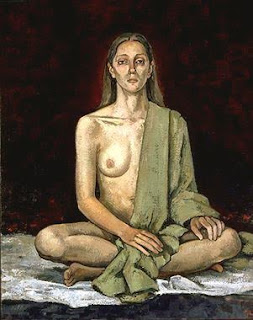I’ve often heard that politics and
religion do not mix. Well, that’s a fairly new idea. In ancient times, if one
nation defeated another, the explanation was that the God of the victorious
nation was stronger than the god of the defeated one. Early on, Christians used
the sword to spread the faith (e.g., Franks forcibly converting the pagan
Saxons); Islam spread its faith by war. Christians and Muslims, and factions
within those two religions, often fought against each other. Leaders used
religion to drum up nationalistic fervor.
Many early science fiction writers
thought that religion would not be a part of the future—overlooking the fact
that religion is part and parcel of the human race and has been around since
our history began. In Arthur C. Clark’s Childhood’s End, religion fades
away when a new race of being introduces Earth to matters that advance our
evolution. In the early Star Trek series, religion was irrelevant. Then
a funny thing happened on the way to Degoba. After Star Wars, with its
Zen-like Force and Zen-monk-like Jedi
Knights, religion suddenly made a roaring comeback. Even the later Star Trek
spin-offs, Voyager and Deep Space Nine, gave place to
religion: the Borg
worshipped a mandala-like geometric pattern and the Bajorans were a very religious
people.
I have no doubt that all the faith,
good, evil, sincerity, hypocrisy, and politics that religion has
brought about on Earth will also exist in a galaxy where space travel is
possible. So in my sci-fi universe, religion exists as much as it presently
does. Other races have their own faiths and, sometimes, convert to religions
brought from Earth. I cannot be convinced that just because a man or woman can
ride about in a spaceship they will not feel a longing for the Divine.
My story, “The Saint,” takes place in a
future world where the Terran Alliance (Earth and its colony planets) is a
major player. There are pro- and anti-Terran systems. One of the races that the
Terrans and many of the others in the galaxy constantly fight is the Housali.
The Housali are treacherous, technologically advanced, and completely
unscrupulous. They often engage in espionage and are eager to use religion as a
manipulative tool for furthering their political ambitions.
In
“The Saint,” special forces operative Laurissa Culdoon is sent on assignment to
capture the leader of an insurgency. The insurgent, Justina Zita, has convinced
the people of the planet that God has spoken to her and she is his appointed
messenger. Laurissa has orders to capture her. With the help of a supporting
platoon, she is able to defeat the force Justina is leading, kill her
bodyguards, and knock her unconscious.
In my sci-fi universe, the Terran (Earth) Alliance is
dominated not by Europeans but by Indians. Hinduism the most widespread
religion and Hindu culture the primary cultural force—though there is
significant minority or Europeans and other races who also belong to the Alliance.
Justine Zita’s insurgents have attacked Hindu temples, massacred clergy and
committed outrages on renunciate women in ashrams (Hindu nuns). The Alliance knew
that only by taking Zita out would they be able to end the violence of the
insurgency. When Laurissa has captured the woman, she contacts her commanding officer, Kamala, to tell her the mission is accomplished.
After
the capture, Laurissa learns that Zita is being mistreated. She talks to
Kamala, whose life she once saved in battle, and asks if she will grant her a
favor. Kamala, who owes Laurissa “obligation” because she saved her life,
agrees. Laurissa asks to see the woman.
She
finds that Zita has been stripped naked and is guarded by
male guards. Kamala has filed a petition for a writ of torture—permission by
the government and military to use torture on the woman; and they plan to
execute her. Laurissa uses her influence with her friend Kamala to get clothes
for Zita. They talk and Laurissa’s suspicions are proven true. She has female
doctors examine the prisoner. They find hallucinogens in her system. She
convinces her superiors that the Housali have used the woman. Hoping to stir up
an insurgency on the planet, they have convinced her that God is speaking to
her and she must lead a military effort to remove the Hindu influence form her
planet. The hallucinogens make her hear voices she assumes are from God. The
Housali also want her executed. If
she is made a martyr, they realize, this will spur her follows to continue
fighting.
A
medical examination and “drying out” from the drugs she had been given makes
Zita return to her old religion and repudiate her role as a military/spiritual
leader. The insurgency is fully broken by this. Zita will not be executed but
returned to her home planet, where the government will mediate between Hindu
and Christian claims and concerns. Home with her husband and children, Laurissa
recalls how religious violence on her old world had hurt her as well.
“The
Saint” appeared in the anthology VFW: Veterans of Future Wars. It is available in print. Get a copy here.
The Court of the Sovereign King is a story of intrigue and perseverance. A young woman is taken in the annual levy, placed under a vow of chastity, and sent to serve in the Court of the Sovereign King. She soon knows the evil that dwells there. And it knows her. Get a copy here.
For additional titles, see my Writer's Page.
The Court of the Sovereign King is a story of intrigue and perseverance. A young woman is taken in the annual levy, placed under a vow of chastity, and sent to serve in the Court of the Sovereign King. She soon knows the evil that dwells there. And it knows her. Get a copy here.
For additional titles, see my Writer's Page.
























